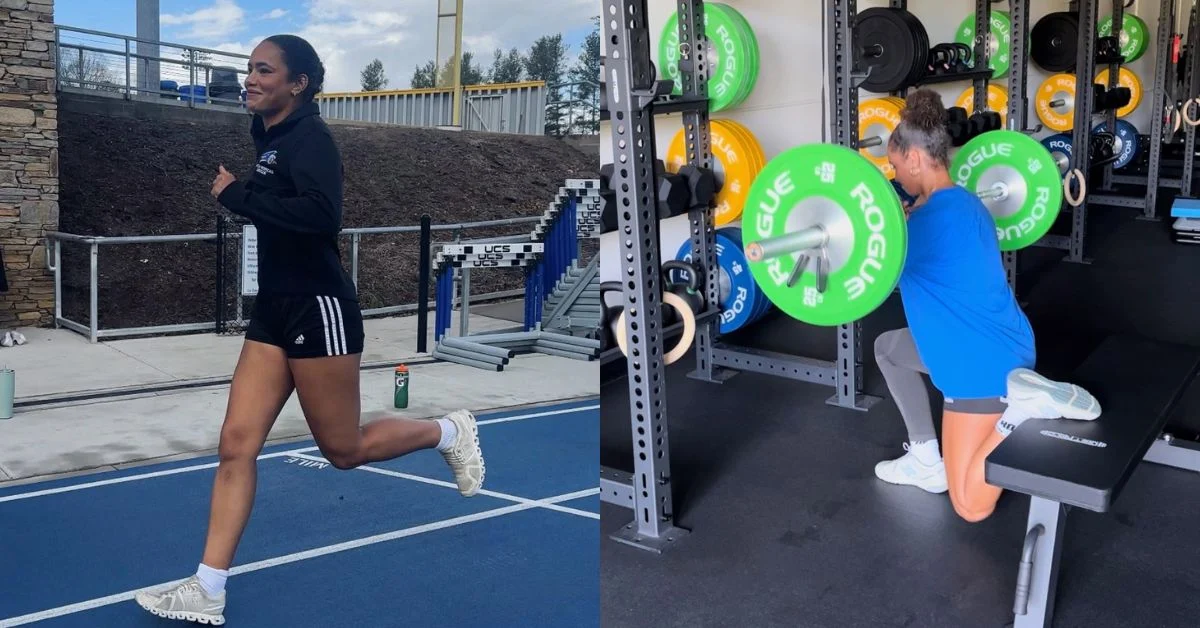The walk to the Devil’s Loop is loaded with anticipation, with those who show up expecting a circuit of self-inflicted punishment. Though some come to run for pure enjoyment or solitude, others push themselves out of necessity. Their eyes linger on the vivid blue path, almost distracting themselves from the small amount of oxygen they take in with each stride.
The Devil’s Loop doesn’t get its name from treacherous terrain or excessive heat beating down on your shoes and back; rather, it refers to the toll it takes on your psyche. Tackling the Devil’s Loop doesn’t just test my endurance, it confronts something deeper within me: a constant cycle of self-reflection, pain, and perseverance that feels…never-ending. Every step forward marks the struggle of pushing through doubt, a reminder of the unforgiving loop of suffering and growth.
To most people, running comes naturally—they do it without a second thought. In my case, the hesitance comes from numerous professionals telling me I couldn’t for half of a year. It feels almost as if there is a stamped stop sign in the folds of my brain telling me not to take that first stride. The mind is a powerful tool—it can be the thing pushing you forward or backward. Having to outrun doubt when that is the very thing holding you back seems almost impossible.
My body is physically healed, but my mind remembers the pain, the setbacks, and the fear of re-injury. The excruciating pain I felt taking my first step after surgery, the frustration I endured from not progressing fast enough, and the fear I faced, constantly questioning whether I will ever be the same athlete I once was. Training my mind to fully trust my body again is like a wall I am slowly trying to break through. There is a wavering caution where instinct used to be, and echoes of uncertainty blanket my mind.
Training my mind to fully trust my body again is like a wall I am slowly trying to break through. There is a wavering caution where instinct used to be, and echoes of uncertainty blanket my mind. Share on XToeing the track, I remembered sitting in the office of Laura Jones, a faculty member in health sciences and neuroscience. Sunlight shone through the bright, open windows, casting soft shadows on the plants that perfectly colored the room. The cushiony seats across from her desk invited an open conversation, the kind of space that made you want to share your whole life story without hesitation.
In that moment, Laura described the new instincts of hesitancy creeping in because you can feel your body pulling back…even when you want to move forward.
“But really, how do we help athletes build new coping skills?” she said, her voice soft, with a slight southern accent. “Help athletes become more resilient in the face of struggle, get them connected, and do anything that we can to prevent the exacerbation of any mental struggles?”
There was something about the way she spoke that made you lean in, not just because of what she was saying, but how she said it. Every phrase was a story worth hearing.
When talking about self-doubt, she gave me something to hold on to.
“Imagine yourself being successful,” she said. “Whatever success means to you. If it’s becoming more resilient when running, picture yourself working through that situation and being successful. Imagery is about seeing yourself succeed, however, you define success.”
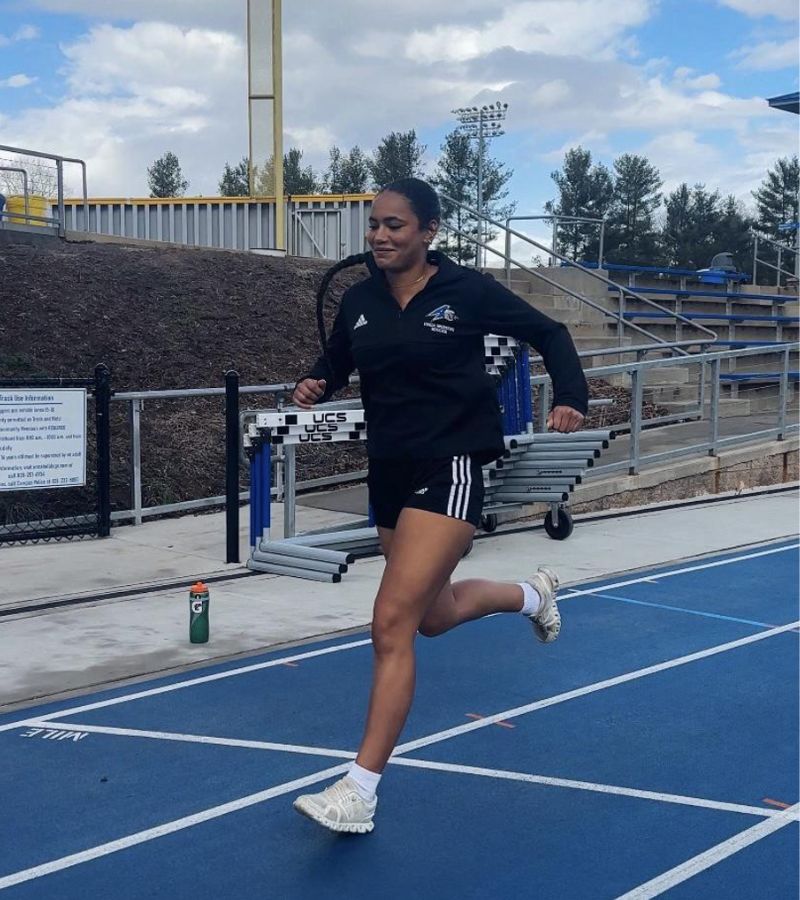
Defying Doubt
I blink.
I catch myself staring ahead, my torso is already leaning over the starting line.
Naturally, loop one is the feeling most people remember. No layers to shed yet because the cold is still creeping in—only thoughts of how the next eight laps will feel when my legs start to bear the heavy presence of fatigue, the track starting to feel like drying cement.
Before I even start my run, I fixate on one question. When my legs begin to cycle, will the hard impact of the ground shoot that familiar pain through my knee? Or…will the first few steps feel effortless, the traction of the track offering comfort, only for the pain to come creeping back in and remind me of my past defeats. I can’t help these thoughts, they come and go as they please. This isn’t any different from when I first started weight-bearing again. I remember knowing I had to take those first steps, forcing myself to have faith that my body will hold me. And then, just like clockwork, I am here again, standing behind the line, the first real sense of normalcy I’ve had in a long time.
I don’t know how this run will feel or how I’ll push myself through it, or if I will even be strong enough to finish. This uncertainty is terrifying, but at the end of the day, I am on my own.
That has to be enough.
I don’t know how this run will feel or how I’ll push myself through it, or if I will even be strong enough to finish. This uncertainty is terrifying, but at the end of the day, I am on my own. Share on XTo distract from these troubling thoughts, I watch a man in a neon green shirt who has been consistent in his regular turns on the track, always showing virtually no emotion when he runs. His pace is nearly a walk, but he moves his arms as if trying to catch the person in front of him. No telling how long he stays after others depart, but he’s always the first and last to leave the loop.
In the second and third laps, the experience begins to shift, like the start of a never-ending story. My once-pale façade has flushed as my breathing becomes more vigorous, and the ground beneath my feet no longer seems as smooth as it once was. The last turn of the third lap serves as a key reminder that the remainder of the journey will only get more difficult.
Knowing that I’m showing clear signs of struggle, I see boys in matching black and blue uniforms, carrying baseball bats and gear, casting looks of discernment. With their own season on the rise, the young men share no glances of envy but will surely pay their dues on the loop soon enough.
Drawing my eye back—refocusing on the task at hand—I push through these laps and realize that this run is its own test…but not the first one I have faced. Before I could drive my legs to run for the first time, I had to rebuild my body from the ground up again.
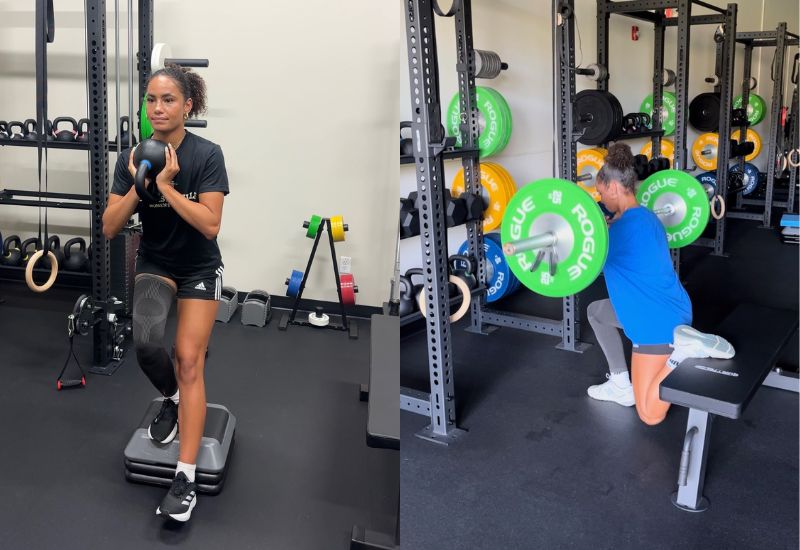
Recovery isn’t just about healing your body, it’s about rebuilding. That means molding a stronger version of myself while leaving the old one behind. In the weight room, in the rehab facility, in every painful step I have taken to get to this point. The last time I felt myself first facing a truly taxing workout was when I started strength training again. That was the early stage of my return to play process. I remember the moment I finally stepped up to the rack again, gripped the steel of the barbell, and loaded the plates. Taking that first deep split squat made my body tingle: I filled my lungs with air and braced for the moment I’d have to drive and push the weight back up.
Recovery isn’t just about healing your body, it’s about rebuilding. That means molding a stronger version of myself while leaving the old one behind. Share on XEven stepping up and down from a box, a simple movement, became one of the biggest challenges of my day. Those early stages of recovery were their own battle, but also became a source of motivation. Reflecting on where I started—compared to where I stand now—I realize the pattern is the same. I have to keep pushing and moving forward, because I know where I want to go. And I know I can get there.
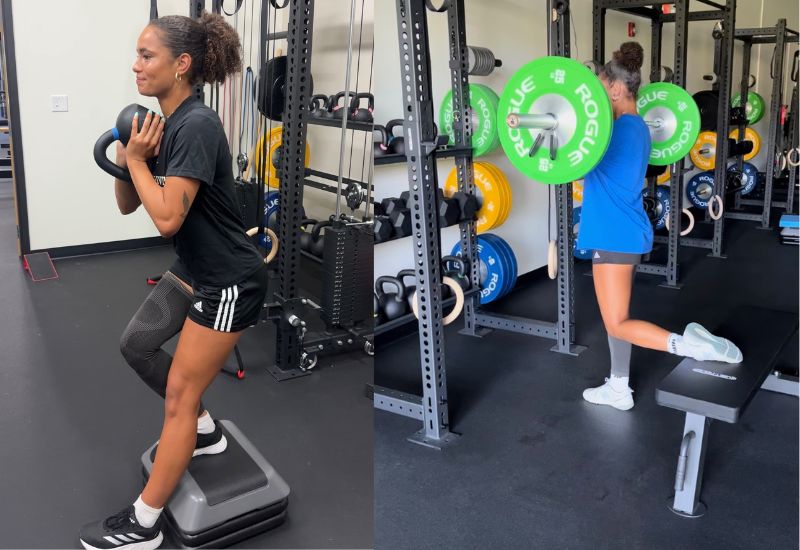
By the fourth and fifth laps, I can feel the weight of effort in every muscle—it’s a battle of mind against body, but both sides are losing. The acceleration of my inhales and exhales forces the body to surrender, and unfamiliar sounds escape from exhaustion. A whisper of self-doubt runs through my mind, but other voices push back. I catch a glimpse of my coaches’ shadows along the pavement as I pass by, their presence guiding me through the loop.
“Get through it and grind,” Coach Andy hollers from my right.
“Hold yourself accountable,” Coach Bella advocates from my left.
Taking their words to heart reminds me that this pain has a purpose. This is not about completing the run—it’s about proving to myself I can accomplish anything if I keep going. The way their voices encouraged me forward felt familiar, a memory of another moment in my recovery process.
A whisper of self-doubt runs through my mind, but other voices push back. This is not about completing the run—it’s about proving to myself I can accomplish anything if I keep going. Share on XI think back to the first time I stepped into a team lift again. After weeks of training in isolation, that moment felt like a return to something bigger than myself. Plates clattering on the floor, the ringing voices of encouragement heard throughout the gym, it all brought me back to what I had so desperately missed. The first time I walked up to my rack again, I saw the nods, the smiles, the simple acknowledgments that I had fought to see again.
For a moment, life felt still.
That day gave me hope. The camaraderie, the shared struggles, the powerful presence of others pushing me harder than ever before. It was a reminder that I was never in this fight alone, and just as before, pushing through these laps, I know I won’t stop.
I remember sitting in my coaches’ office, their voices stern but encouraging, telling me to set little goals for myself. Once I achieve all those goals, then I will set bigger ones. Even though running is a little goal, it still feels like enemy territory—at any moment, I fear I could be shot down.
The coaches understand how hard it is being away from my sport. I feel like an outsider, watching instead of having a sense of belonging. During this time of loneliness, being involved in practice in any way is crucial for me. Whether it is acting as a stationary defender for players to practice their moves around, feeding balls into drills, or even counting scores during games, it gives me something to do and keeps me engaged. These small tasks allowed me to stay connected with the team—sitting on the sidelines and watching the action happen without being a part of it can feel isolating. Being active in training, no matter how small the role, can make a big difference in feeling a sense of belonging, even when you feel the most distant.
Being active in training, no matter how small the role, can make a big difference in feeling a sense of belonging, even when you feel the most distant. Share on XI know that each step gets me closer to my end goal—to be back on Greenwood field again.
Suddenly, though, a devil perches on my shoulder, craving defeat…but just as quickly, a light shines through, illuminating perseverance with each heavy stride. I chose the light, brushing off the devil’s temptation to give up, drowning out the outer noise with my own internal voice, over and over, speaking empowering words of affirmation.
The last stretch of the fifth lap marks the approach of the end. The body yearns for relief from the endless loop. Vision becomes less clear, lost in the rhythm of exhaustion—a man stretching nearly gets toppled, sending a brief jolt of panic through my chest, accelerating it further. He doesn’t seem to mind, offering a quick nod of encouragement to continue.
A Fight to Finish
With the end in sight, the sixth and seventh laps merged. There’s a burst of energy that wasn’t expected, but each step brings me closer to relief. The beginning of the end almost feels promised, just like being cleared to lift, to jump, and finally to run with intensity. These have all been checkpoints throughout my journey, each one drawing me closer and closer to the finish line.
I hear my heart pounding fast, loud, and the hot gasps of air fighting the cold winter wind. Water swells up in my eyes from the striking dry air, the current world blurs around me.
All at once I’m thirteen again, chasing a ball down the field, trying to outrun the girl beside me. At that age, it felt like you either gave your all or it was nothing, there was always something to prove.
“Run faster 28!” my dad fiercely calls from the sideline, urging my little legs forward.
The opposing coach starts countering my dad’s words.
“SHE’S FASTER THAN ALL OF YOU COMBINED!”
“GIVE YOURSELF ROOM SO YOU DON’T GET BEAT!”
A cheeky grin peaks from my face, unable to contain how humorous the opposing team’s frustration with me was. Turning to my dad, he let out a proud and deep chuckle. He gave me one final look, a signal to leave everything out on the field. And just like that, I was off again, running as fast as I could across the pitch. Not stopping until the ball was in the back of the net to secure victory for my teammates. These memories soon faded as I rubbed my eyes, clearing my vision.
I wasn’t in my little white and burgundy uniform anymore.
My bright pink knee-high socks ceased to exist.
And my messy bun returned to my sleek ponytail, braided to waist length.
You never realize how quickly time passes until it’s gone. As a little girl, I never believed I could get hurt, never imagined that everything could be gone in an instant. It was the only period in time I had no fear, when the voices of parents on the sidelines fell quiet in my head and my mind was clear of uncertainty.
You never realize how quickly time passes until it's gone. As a little girl, I never believed I could get hurt, never imagined that everything could be gone in an instant. Share on XNow, I hear everything—even the things that aren’t there.
There are faint words of encouragement from the field above, they are there: “You got it, Sage!”
That was the push I needed to finish the last lap with pace. Every stride became just a little longer, and thoughts of tiredness faded into the background of the laps I’d left behind. The finish line loomed ahead—with ragged breaths and sharp pains shooting through my calves, the courage to continue held firm. Inch by inch, the last reserves of strength peaked out of every pore to cross the final line. Without hesitation, the timer was paused, and my hands caught the ground, bracing before my knees hit the track.
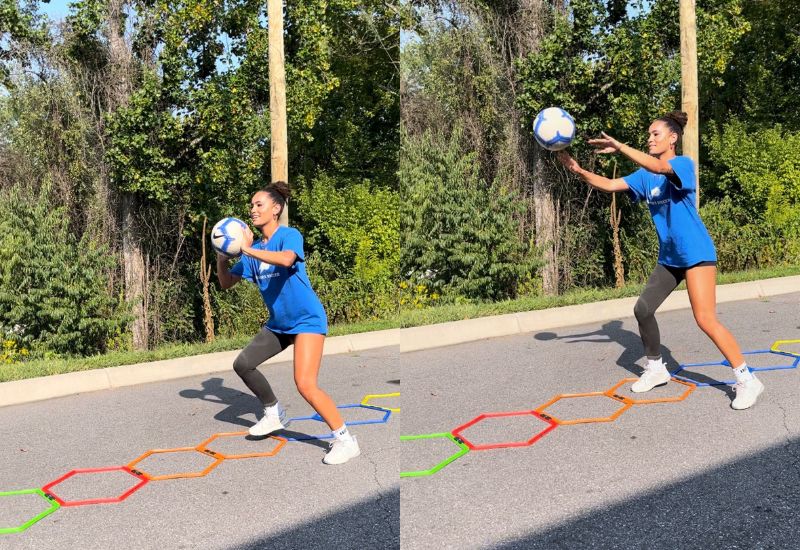
After finishing the run, all I could think about was how far I had come…and also the day I could barely walk off the field during warm-ups. I was moments away from hearing the first whistle, the ball being pinged around the field, and the cheers from my team’s bench.
Everything changed the moment I took one wrong step.
With my eye on the ball, my right foot planted slightly at an angle and then a hard crunch and snap forced me to my knees. A flood of emotions entered my mind and I couldn’t stop the water from flowing.
“Help! Something is wrong!” I screamed, loud and hard until I was red in the face.
The trainer rushed to me and bent down so he could meet my gaze, his touch firm but careful. He tested my knee, comparing my left to the right with precise yanks and pulls. I studied his facial expressions as he bent my leg in different directions. He was calm, almost reassuring, but his eyes told me something different. He didn’t want to tell me what he was thinking, so he avoided my questions, steering the conversation away from a truth I wasn’t ready to hear. Instead, he pulled my coaches aside, speaking with them in low voices.
Their body language and expressions confirmed what he wouldn’t say loud enough for me to hear. This wasn’t just a minor tweak, it was something more.
I had done everything right, I don’t know how I could have stopped it from happening. But none of it mattered at that moment. Every athlete’s worst nightmare. It happened to me. Giving up was an option, but I knew better than to just throw it all away. Pain is temporary, and I wanted to be able to look back and say that I pushed through.
Giving up was an option, but I knew better than to just throw it all away. Pain is temporary, and I wanted to be able to look back and say that I pushed through. Share on XAfter a few moments of stillness, the burning in my lungs began to settle. The sharp winter air no longer felt like an adversary; instead, it cooled the sweat clinging to my skin. Slowly, easing upright with hands pressing against sore knees, I took a long look to the loop as my airways re-opened.
Other runners passed, breaths visible in the crisp air, their battles just beginning. The man in the neon green shirt was still there, moving with that same slow but determined rhythm.
Step by step, I moved away from the loop and past the gate, my thoughts lingering on exhaustion and muscle aches. The loop wasn’t just a place of struggle—it now represented how adversity can be overcome. A final glance back at the vivid blue track brought a sense of pride in my completion, much like others who had just finished their runs.
This marks the end of the beginning for me. Months from now, this moment will blur into the past, a distant memory of struggle and doubt. The fear of it all will fade, and when the time comes, it will be me on the field again. Sprinting without restraint, chasing the ball, and finally feeling connected with my teammates again. Playing in my first game back, that is the moment I will hold onto forever.

